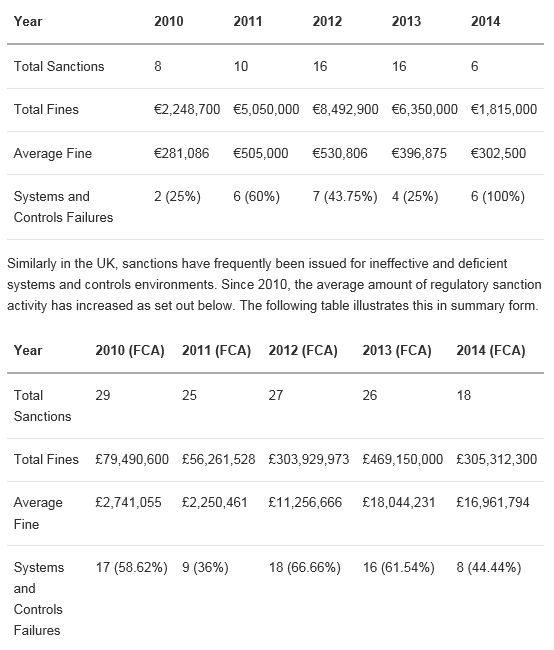This publication provides a brief overview of the expected impact on entities incorporated in the Cayman Islands of (a) the foreign account tax compliance provisions (“FATCA“) of the Hiring Incentives to Restore Employment Act, 2010 of the United States of America (the “US“); and (b) equivalent rules implemented in relation to United Kingdom (UK) taxpayers.
1. BACKGROUND
FATCA is a US federal law that aims to reduce tax evasion by US persons. FATCA has significant extra-territorial implications and, most notably, requires foreign financial institutions (“FFIs“, discussed further below) to report information on accounts of US taxpayers to the US Internal Revenue Service (“IRS“). If an FFI fails to enter into the necessary reporting arrangements with the IRS, a 30% withholding tax is imposed on US source income and other US related payments of the FFI.
In order to facilitate reporting under and reduce the burden of compliance with FATCA, the Cayman Islands has signed a Model 1B intergovernmental agreement with the US (the “US IGA“).The US IGA allows Cayman Islands entities that are FFIs to comply with the reporting obligations imposed by FATCA without having to enter into an agreement directly with the IRS. Instead, a Cayman Islands FFI may report directly to the Cayman Islands Tax Information Authority (the “TIA“) and, provided it complies with the relevant procedures and reporting obligations, will be treated as a deemed compliant FFI that is not subject to automatic withholding on US source income and other US related payments.
While this publication is principally focused on FATCA and the US IGA, it is important to note that the UK has implemented an equivalent reporting regime in relation to UK citizens (“UK FATCA“).The UK regime, which is similar to FATCA, however does not impose withholding on UK source income, has been implemented by means of an intergovernmental agreement between the Cayman Islands and the UK (the “UK IGA“). A brief summary of UK FATCA and its impact on Cayman Islands entities is included in section 7 below.
2. WHAT DOES FATCA MEAN FOR YOUR CAYMAN ISLANDS ENTITY?
The impact FATCA will have on a Cayman Islands entity fundamentally depends on one key question: is the Cayman Islands entity an FFI?
While FATCA has significant implications for Cayman Islands entities that are FFIs – such as banks, custodians, hedge funds, private equity funds, trust companies, trusts and other regulated entities – a typical Cayman Islands holding company or joint venture vehicle will not generally be an FFI and should not be materially affected by FATCA.
Accordingly, the first step a Cayman Islands entity needs to take is to determine its FATCA classification and in particular whether or not it is an FFI. A broad summary of how to determine whether your Cayman Islands entity is an FFI, and a description of the steps that must be taken if the Cayman Islands entity is an FFI, are addressed in sections 3 and 5 below.
Any Cayman Islands entity that is not an FFI – such as a typical Cayman Islands holding company – will be a non-financial foreign entity (a “NFFE“) for the purposes of FATCA. Cayman Islands NFFEs are not generally subject to registration or reporting requirements under FATCA, but they will be required to self-certify their status to financial institutions and other withholding agents with whom they maintain accounts to avoid FATCA withholding. This is discussed further in section 4 below.
3. WHEN WILL A CAYMAN ISLANDS ENTITY BE CLASSIFIED AS A “FOREIGN FINANCIAL INSTITUTION” OR (“FFI”)?
FATCA is very complex and a detailed analysis is required in each case to determine if a Cayman Islands entity is in fact a FFI. However, generally, the following four categories of Cayman Islands entities will be FFIs and be directly affected by FATCA’s registration and reporting requirements:
- Investment Entities: Broadly, an entity that conducts (or is managed by an entity that conducts) trading or portfolio and investment management activities as a business on behalf of a customer or otherwise invests, administers or manages funds or money on behalf of other persons.
- Custodial Institutions: An entity that holds, as a substantial portion of its business (broadly, more than 20% of gross revenues), financial assets for the account of others.
- Depository Institutions: An entity that accepts deposits in the ordinary course of a banking or similar business and regularly engages in one or more of the following activities (a) provision of credit; (b) trading in receivables, notes or similar instruments; (c) issues letters of credit; (d) provides trust or fiduciary services; (e) finances foreign exchange transactions; or (f) deals in finance leases or leased assets.
- Specified Insurance Companies: An insurance company (or its holding company) that issues, or is liable under, certain cash value or annuity contracts.
Set out below are categories of Cayman Islands entities that Conyers frequently deal with alongside some basic guidance on whether such Cayman Islands entities will be FFIs. In cases where such entities may be FFIs, we also consider whether any exemption to registration and reporting may be available.
Hedge funds and private equity funds
Almost all hedge funds and private equity funds will be Investment Entities and therefore qualify as FFIs under FATCA. The one exception is that funds where more than 50% of the gross revenues are from real estate (or other non-financial assets) will generally fall outside the definition of Investment Entity (and therefore FFI) for the purposes of FATCA.1 There are some other limited exemptions available to hedge funds and private equity funds, but these are expected to be of limited practical use for the vast majority of such funds.
It is important to note that, where a master-feeder structure is used, both the master fund and the feeder fund will be FFIs. Furthermore, a subsidiary Cayman Islands trading entity of a hedge fund is also likely to be an Investment Entity and therefore an FFI.2 In section 6 below, we discuss the possibility of using a “Sponsoring Entity” to facilitate FATCA compliance for structures with multiple FFIs.
Cayman Islands managers and advisers of hedge funds and private equity funds
Cayman Islands entities that act solely as managers and advisers of hedge funds and private equity funds will typically not need to register and report as FFIs.
Although Cayman Islands managers and advisers fall within the definition of Investment Entity (and therefore FFI), the US IGA contains an exemption for a Cayman Islands FFI that qualifies as an Investment Entity solely because it (a) renders investment advice to, and acts on behalf of, or (b) manages portfolios for, and acts on behalf of, a customer for the purposes of investing, managing, or administering funds deposited in the name of the customer with a participating FFI. Accordingly, Cayman Islands managers and advisers will generally not be required to register with the IRS and report on their own account. They may, however, be required to self-certify as NFFEs.
Cayman Islands holding companies and joint ventures
As noted above, a typical Cayman Islands holding company or joint venture vehicle that owns assets on its own account and does not operate as an investment fund would not generally be expected to be an FFI for the purposes of FATCA. Rather, this type of Cayman Islands holding company will generally be a NFFE (discussed in section 4 below).
However, the directors of a Cayman Islands holding company that has or wishes to open a bank or securities account will still need to consider their FATCA classification carefully. Such a Cayman Islands holding company will likely be required to certify their status to the relevant financial institution to avoid withholding, as discussed in section 4 below.
Cayman Islands securitization vehicles
A typical Cayman Islands securitization vehicle will normally be an Investment Entity and therefore an FFI for the purposes of FATCA, subject to limited transitional relief for pre-existing vehicles.
Financing SPVs
Cayman Islands entities that are established solely for the purpose of borrowing or granting security in relation to the provision of debt finance to an underlying business typically will not be FFIs. Similarly, Cayman Islands entities which are established to own and finance aircraft, ships or other form of moveable asset of a similar nature would not typically fall within the definition of an FFI.
Trusts with a Cayman Islands trustee
The treatment of trusts under FATCA is complex. The Cayman Islands FATCA rules only apply to a trust if the trustee is a Cayman Islands entity or is an individual resident in the Cayman Islands. Subject to some complex optionality for trustees, the majority of trusts that have a Cayman Islands trust company acting as trustee will likely be FFIs for FATCA purposes.
Private trust companies (“PTCs“) are also likely to be FFIs for the purposes of FATCA, although this needs to be considered in each case. In particular, if the PTC and its directors are not remunerated for acting as trustee, the PTC and the underlying trust may conclude that it does not meet the definition of an FFI on the basis that the PTC is not conducting business. This is a topic that should be discussed with your adviser.
Clients with trusts that have Cayman Islands trustees or a Cayman PTC are advised to liaise with their advisers to determine the most appropriate course of action for their trust.
Insurance companies
Only insurance companies that issue or are required to make payments with respect to a cash value insurance contract or an annuity contract will be FFIs pursuant to FATCA. Captive insurers and insurance companies that do not write annuities or whole life insurance products will generally be NFFEs.
Branches and foreign subsidiaries
Branches of entities are treated separately for FATCA purposes – an overseas branch of a Cayman Islands FFI will not be covered by the Cayman Islands IGA and must consider the rules applicable in that branch’s jurisdiction, whether under an IGA or the US regulations. A foreign subsidiary of a Cayman Islands FFI must also comply with the FATCA rules in its home jurisdiction.
4. CAYMAN ISLANDS ENTITIES THAT ARE NOT FFIS
As noted above, any Cayman Islands entity that is not an FFI – such as a typical Cayman Islands holding company – will be a NFFE. Although NFFEs are not generally subject to registration or reporting requirements, they will still be required to self-certify their status to financial institutions with whom they maintain financial accounts to avoid FATCA withholding.
In this regard, the US W8-BEN-E form has recently been amended to require entities to confirm their FATCA classification to US withholding agents and provide related information with respect thereto. Cayman Islands entities that hold accounts with financial institutions can certainly expect to complete these W8-BEN-E forms and provide other FATCA related certifications.
There are two categories of NFFE:
- Active NFFE: The criteria which would qualify a NFFE as being an Active NFFE are numerous, and include where less than 50% of its gross income for the preceding calendar year is passive income (such as dividends, interest, royalties, annuities and rent) and less than 50% of the assets held during the preceding calendar year or other appropriate reporting period are assets that produce or are held for the production of passive income. For Active NFFEs, completion of the W8-BEN-E form essentially only requires completing the information on the first page, ticking “Active NFFE” on question 5 and then certifying that the entity is an Active NFFE in question 39.
- Passive NFFE: Broadly, a Passive NFFE is a NFFE that is not an Active NFFE. For Passive NFFEs, the W8-BEN-E form also requires the NFFE to certify (having done appropriate due diligence) whether or not it has any substantial US owners (broadly, a US person with a 10% or more interest). To the extent it has substantial US owners, the name, address and US taxpayer identification number of each substantial US owner must be provided.
It is important that each Cayman Islands NFFE establishes which category it falls into so it can provide the necessary certification to financial institutions with which it maintains accounts. The W8-BEN-E form is signed under penalty of perjury.
5. WHAT DOES A CAYMAN ISLANDS FFI NEED TO DO TO COMPLY WITH FATCA?
If your Cayman Islands entity is an FFI for which an exemption is not available, you will need to take the following steps:
- Obtain a Global Intermediary Identification Number (“GIIN”) by 31 December 2014: Cayman Islands FFIs that are not exempt (“Reporting FFIs“) and certain “registered deemed compliant ” FFIs are required to register on the IRS FATCA registration portal (https://sa2.www4.irs.gov/fatca-rup/) for the purpose of obtaining a GIIN. This registration must occur no later than 31 December 2014, although it is recommended you register as soon as possible to avoid registration congestion at the end of the year.3 If a non-exempt Cayman Islands FFI does not register for a GIIN by this date, the entity will not continue to benefit from the IGA after 1 January 2015 and it will be subject to withholding from US paying agents and other FFIs.
- Identify Reportable Accounts: FATCA and the US IGA impose an obligation on Cayman Islands Reporting FFIs to identify and report details of “reportable accounts” to the TIA. “Reportable accounts” are financial accounts where the account holder is either a “Specified US Person” (broadly, any US person or person liable to pay US tax with some exceptions) or is a non-US entity the controlling persons of which include one or more Specified US Persons. Financial accounts include any depositary or custodial accounts and also, in the case of certain Investment Entities, any debt or equity holdings in the FFI. In the case of Cayman Islands funds, the relevant account is the shares/interests each investor holds in the fund.
- Identifying reportable accounts involves two separate processes, one for existing accounts and one for new accounts:
- Existing accounts: FFIs will also need to perform due diligence on “financial accounts” that they maintained as at 30 June, 2014 (subject to certain de minimis thresholds for small accounts). Specifically, accounts that are reviewed must be searched for prescribed US indicia, including US place of birth and US address. If the account holder is a Specified US Person, details of their account must be reported (as described below). If the account holder is not a Specified US Person but there are US indicia in relation to its account, the Cayman Islands FFI must take steps to “cure” the US indicia. In particular, self-certification by the account holder and further documentation evidencing the person is not a Specified US Person, is likely required. If the account holder does not respond or it is not otherwise possible to cure the US indicia, the account should be treated as reportable. The deadline for completing due diligence on existing accounts depends on a number of factors, including the balance of the account. Most critically, remediation of US indicia needs to be completed on all accounts over US $1 million by 30 June 2015.
- New account procedures and due diligence: For new accounts opened with the FFI after 1 July 2014,4 it is necessary to carry out due diligence and obtain self-certification regarding whether the account holder is a Specified US Person. If US Indicia are found that suggest the person may be a US taxpayer, prescribed steps will need to be taken to confirm this. For accounts opened by another participating FFI, the FFI’s GIIN should be obtained and verified against the publicly available IRS FFI list. In general terms, all Cayman Islands FFIs should be revising their account opening forms and/or subscription agreements to ensure they comply with FATCA rules in relation to new accounts. For funds, it is also important to update offering and constitutional documents to ensure FATCA is appropriately addressed.
- Reporting: On or before 31 May 2015, Cayman Islands FFIs must make their first report to the TIA in relation to accounts held by Specified US Persons or a non-US entity with one or more controlling persons that are Specified US Persons. The US IGA prescribes the information that needs to be reported. Most significantly, it requires the balance of value of the relevant account held by the Specified US Person to be reported. Expanded information is required for the subsequent reporting period ending 31 May 2016. Upon receipt of a report, the TIA will pass the reported information to the IRS.
6. SIMPLIFIED REPORTING FOR GROUPS OF FFIS
If a group has one or more eligible Investment Entities, the group may elect to register one “Sponsoring Entity” for FATCA reporting purposes. The appointment of a Sponsoring Entity effectively allows all FATCA compliance and reporting to be delegated to one entity in the group. To appoint a Sponsoring Entity:
- The Sponsoring Entity must be authorized to act on behalf of the sponsored Investment Entities and agree to carry out all due diligence and reporting obligations on behalf of the sponsored Investment Entities.
- The Sponsoring Entity has to register and obtain a sponsoring GIIN.
- If the sponsored Investment Entities hold reportable accounts, the Sponsoring Entity will ultimately be required to register each Sponsored Investment Entity that it manages.
A Sponsoring Entity must report to the TIA all reportable accounts of its sponsored Cayman Islands Investment Entities.
7. UK FATCA AND FUTURE REPORTING
UK FATCA follows the FATCA model very closely, although there are some important differences in the detail. In particular, it requires Cayman Islands FFIs to undertake due diligence to identify and then report on financial accounts of Specified UK Persons. As UK citizens are not subject to universal taxation, the definition of Specified UK Persons is not as extensive as under FATCA and generally includes a UK resident and a UK incorporated entity. A non-UK entity controlled by Specified UK Persons is also subject to the reporting obligation.
UK FATCA requires Cayman Islands FFIs to start carrying out due diligence on its accounts and identify Specified UK Persons now, although the first reporting date for UK FATCA is not until 31 May 2016.5 On the first reporting date, specified information on the accounts of Specified UK Persons and non-UK entities controlled by Specified UK Persons must be reported to the TIA.
No withholding tax will be imposed for non-compliant FFIs under UK FATCA. However, under the Cayman Islands implementing legislation there are specific offences for Cayman Islands entities that fail to comply with the reporting obligations of UK FATCA.
A number of banks in the UK have already begun requiring Cayman Islands entities that hold accounts to certify their status under UK FATCA. Accordingly, just as with FATCA, it is important that all Cayman Islands entities determine their UK FATCA classification as soon as possible (which will almost always be the same as under FATCA).
8. CONCLUSION
FATCA is a controversial piece of legislation, not least because it imposes a significant compliance burden on FFIs. However, the automatic exchange of information and increased transparency introduced by FATCA looks to become the global standard. In addition to UK FATCA, forty-seven countries (including the Cayman Islands and all other OECD countries) have committed to implement the OECD’s Common Reporting Standard (the “CRS”). The CRS, which is based on FATCA and requires the automatic exchange of information on assets and income of citizens of all signatory countries, will likely be brought into force around 2017. Accordingly, the implementation of robust systems by Cayman Islands FFIs to comply with FATCA can be viewed as important preparation for what is likely to be a new global standard on information exchange.
For the majority of Cayman Islands entities which are not FFIs, it is very much a case of “business as usual”. Other than having to determine their FATCA classification and certify/evidence their status to financial institutions with which they hold accounts, FATCA and UK FATCA should hopefully have a limited impact on day-to-day operations.
Footnotes
1. In the private equity context, this “gross revenues” test may also exempt Cayman Islands portfolio companies from being Investment Entities.
2. The position is more complex for Cayman Islands subsidiaries of private equity funds and advice should be sought.
3. In order to be included on the IRS GIIN Registration List for 1 January 2015, registration is required by 22 December 2014.
4. Although it should be noted that IRS Notice 2014-33 generally allows FFIs to treat new accounts opened before 1 January 2015 as “pre-existing”, subject to certain modifications of the compliance rules for such accounts.
5. The first reporting period is for 2014 and covers the period from 30 June 2014 to 5 April 2015. This information must be reported to the TIA by 31 May 2016 for onward submission to UK authorities by 30 September 2016.






